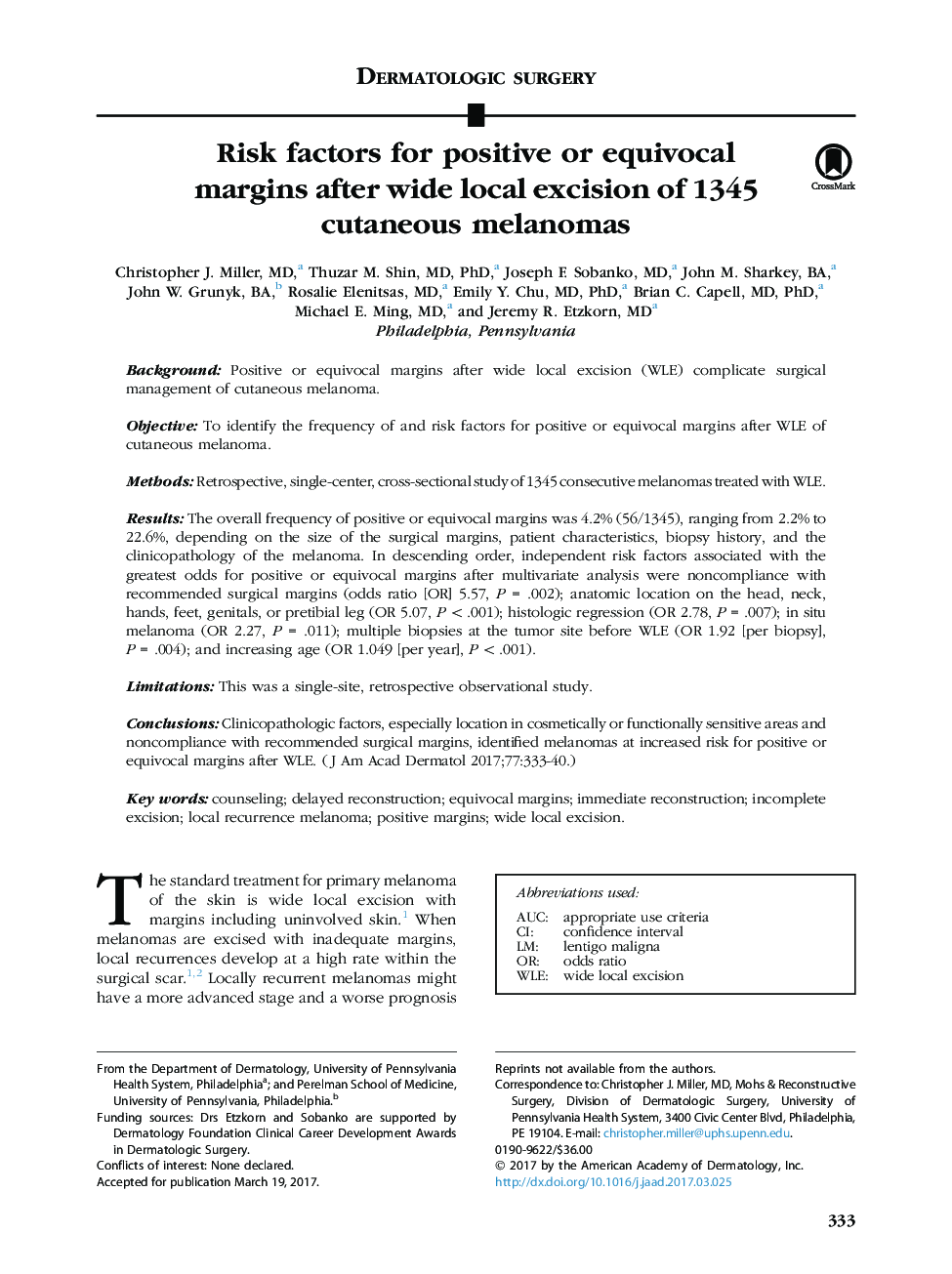| Article ID | Journal | Published Year | Pages | File Type |
|---|---|---|---|---|
| 5648667 | Journal of the American Academy of Dermatology | 2017 | 9 Pages |
BackgroundPositive or equivocal margins after wide local excision (WLE) complicate surgical management of cutaneous melanoma.ObjectiveTo identify the frequency of and risk factors for positive or equivocal margins after WLE of cutaneous melanoma.MethodsRetrospective, single-center, cross-sectional study of 1345 consecutive melanomas treated with WLE.ResultsThe overall frequency of positive or equivocal margins was 4.2% (56/1345), ranging from 2.2% to 22.6%, depending on the size of the surgical margins, patient characteristics, biopsy history, and the clinicopathology of the melanoma. In descending order, independent risk factors associated with the greatest odds for positive or equivocal margins after multivariate analysis were noncompliance with recommended surgical margins (odds ratio [OR] 5.57, PÂ =Â .002); anatomic location on the head, neck, hands, feet, genitals, or pretibial leg (OR 5.07, PÂ <Â .001); histologic regression (OR 2.78, PÂ =Â .007); in situ melanoma (OR 2.27, PÂ =Â .011); multiple biopsies at the tumor site before WLE (OR 1.92 [per biopsy], PÂ =Â .004); and increasing age (OR 1.049 [per year], PÂ <Â .001).LimitationsThis was a single-site, retrospective observational study.ConclusionsClinicopathologic factors, especially location in cosmetically or functionally sensitive areas and noncompliance with recommended surgical margins, identified melanomas at increased risk for positive or equivocal margins after WLE.
